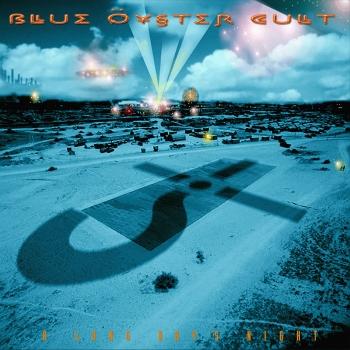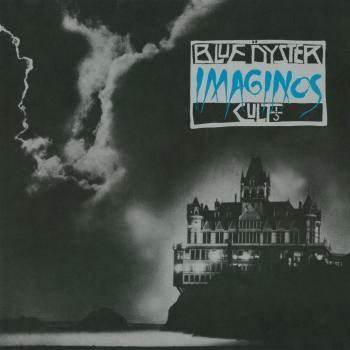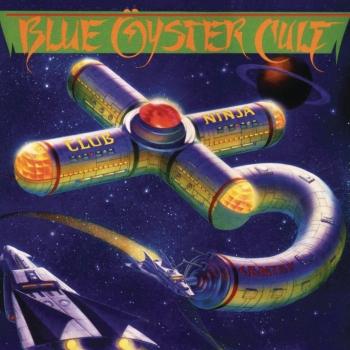
Tyranny And Mutation (Remaster) Blue Oyster Cult
Album info
Album-Release:
1973
HRA-Release:
13.07.2016
Label: Sony / Columbia / Legacy
Genre: Rock
Subgenre: Hard Rock
Artist: Blue Oyster Cult
Composer: Eric Bloom, A. Bouchard, S. Pearlman, Donald Roeser, R. Meltzer
Album including Album cover
I`m sorry!
Dear HIGHRESAUDIO Visitor,
due to territorial constraints and also different releases dates in each country you currently can`t purchase this album. We are updating our release dates twice a week. So, please feel free to check from time-to-time, if the album is available for your country.
We suggest, that you bookmark the album and use our Short List function.
Thank you for your understanding and patience.
Yours sincerely, HIGHRESAUDIO
- 1 The Red & the Black 04:24
- 2 O.D.'d On Life Itself 04:47
- 3 Hot Rails to Hell 05:12
- 4 7 Screaming Diz-Busters 07:01
- 5 Baby Ice Dog 03:29
- 6 Wings Wetted Down 04:12
- 7 Teen Archer 03:57
- 8 Mistress of the Salmon Salt (Quicklime Girl) 05:08
Info for Tyranny And Mutation (Remaster)
The Blue Öyster Cult follows up their debut with another solid release in 1973, bringing them one step closer to the commercial success they would soon enjoy. Includes The Red & the Black; Hot Rails to Hell; Baby Ice Dog; Wings Wetted Down; Teen Archer; Buck's Boogie, and more.
The second album was a heavier and better-produced effort than the debut. The first side of it was called 'The Black' and the second one 'The Red' (Queen would use the same idea for their second album a year later). The opening song 'The Red and the Black' was a rewritten and STRONGLY improved version of 'I'm on the Lamb But I Ain't No Sheep' from the debut. Here the excellent riff finally comes to its full right, and the song stands as one of Blue Öyster Cult's definitive classics. The same goes for 'Hot Rails to Hell' and the epic '7 Screaming Diz-Busters' that borders on heavy prog. 'O.D.'d on Life Itself' has a surprisingly basic blues riff combined with a poppy chorus. The 'red side' is a bit slower and less frenetic, but without loosing any of the energy and power. The doomy and atmospheric 'Wings Wetted Down' reveals their melodic qualities very well. 'Baby Ice Dog' has weirdly muted solos among loud heavy bouncing riffs and a main melody quite typical of Blue Öyster Cult. The more upbeat and quirky 'Teen Archer' is also of prime quality, while the closer 'Mistress of the Salmon Salt (Qucklime Girl)' shows Blue Öyster Cult's typical thing of combining heavy riffs with a melodic chorus. 'Tyranny and Mutation' is probably their hardest rocking record, and just like most of their other '70s albums one of their best.
„On Tyranny and Mutation, Blue Öyster Cult achieved the seemingly impossible: they brightened their sound and deepened their mystique. The band picked up their tempos considerably on this sophomore effort, and producers Sandy Pearlman and Murray Krugman added a lightning bolt of high-end sonics to their frequency range. Add to this the starling lyrical contributions of Pearlman, rock critic Richard Meltzer, and poet-cum-rocker Patti Smith (who was keyboardist Allen Lanier's girlfriend at the time), the split imagery of Side One's thematic, 'The Red' and Side Two's 'The Black,' and the flip-to-wig-city, dark conspiracy of Gawlik's cover art, and an entire concept was not only born and executed, it was received. The Black side of Tyranny and Mutation is its reliance on speed, punched-up big guitars, and throbbing riffs such as in 'The Red and the Black,' 'O.D'd on Life Itself,' 'Hot Rails to Hell,' and '7 Screaming Diz-Busters,' all of which showcased the biker boogie taken to a dizzyingly extreme boundary; one where everything flies by in a dark blur, and the articulations of that worldview are informed as much by atmosphere as idea. This is screaming, methamphetamine-fueled rock & roll that was all about attitude, mystery, and a sense of nihilistic humor that was deep in the cuff. Here was the crossroads: the middle of rock's Bermuda triangle where BÖC marked the black cross of the intersection between New York's other reigning kings of mystery theater and absurd excess: the Velvet Underground and Kiss -- two years before their first album -- and the ' 'it's all F#$&%* so who gives a rat's ass' attitude that embodied the City's punk chic half-a-decade later. On the Red Side, beginning with the syncopated striations of 'Baby Ice Dog,' in which Allen Lanier's piano was as important as Buck Dharma's guitar throb, elements of ambiguity and bluesy swagger enter into the mix. Eric Bloom was the perfect frontman: he twirled the words around in his mouth before spitting them out with requisite piss-and-vinegar, and a sense of decadent dandy that underscored the music's elegance, as well as its power. He was at ease whether the topic was necromancy, S&M, apocalyptic warfare, or cultural dissolution. By the LP's end, on 'Mistress of the Salmon Salt,' Bloom was being covered over by a kind of aggressively architected psychedelia that kept the '60s at bay while embracing the more aggressive, tenser nature of the times. While BÖC's Secret Treaties is widely recognized as the Cult's classic album, one would do well to consider Tyranny and Mutation in the same light.“ (Thom Jurek, AMG)
Eric Bloom, stun guitar, synthesizers, vocals
Donald 'Buck Dharma' Roeser, guitar, vocals
Allen Lanier, keyboards, rhythm guitar
Joe Bouchard, bass, keyboards, vocals
Albert Bouchard, drums, vocals
Recorded 1972 at Columbia Studios, New York City
Engineered by Tim Geelan, Lou Schlossberg, Phil Giambalvo
Produced by Murray Krugman, Sandy Pearlman
Digitally remastered
Blue Öyster Cult
Spanning three decades, Blue Öyster Cult has a long and storied history. The band got its start in the late ’60s on Long Island, New York, as the Soft White Underbelly, but each member had been involved in bands previously in high school and college, before ending up in the “right place at the right time” to create the beginnings of Blue Öyster Cult.
The threads that eventually wove together to create Blue Öyster Cult got their start in upstate New York.
Long Island native Donald Roeser and Albert Bouchard (of Watertown, New York) met at Clarkson College, in Potsdam, NY. The two were introduced by a mutual friend, Bruce Abbott (who later co-authored “Golden Age of Leather” with Donald). With Abbott and two other friends, they formed “The Disciples” and played college parties and local beer halls. The next year, the band reformed and played the same circuits as “Travesty” (named after the Blues Project album). Through all this, their studies fell by the wayside, and both Albert and Donald decided to quit college to concentrate on playing music full-time.
Eventually “Travesty” broke up, Donald and Albert took seperate paths for a while. Donald went back to Long Island, and Albert took a musical opportunity in Chicago. After moving there, though, the band fizzled, and Albert returned to NY and joined Donald. In the meantime, Donald had been jamming with local musicians, and had met a person that would become very influential in their future: Sandy Pearlman.
Sandy Pearlman became interested in rock music around the time of the British Invasion, and was a pioneering voice of rock criticism, opening a new field for creative writers like Lester Bangs. Both Pearlman and his friend Richard Meltzer were contributors for seminal magazine “Crawdaddy!,” the first magazine that dedicated itself to analysis of rock music and its culture.
Allen Lanier came into the fold by way of guitarist John Wiesenthal. Allen had accepted employment at a film company at which Wiesenthal was also an employee. After becoming acquainted, Wiesenthal invited Allen out to Long Island to meet and jam with the loose group of musicians he played with, and Allen began to regularly jam with them.
An old house near Stony Brook College became ground zero for the formative band, and casual jams with whomever happened to be hanging around began to turn into rehearsals with a core band, which included Wiesenthal, Donald, Albert, Allen and Andrew Winters, a school friend of Donald. It was 1967.
Pearlman (along with Meltzer and Wiesenthal) had been a student at Stony Brook, and was becoming increasingly involved in the music scene. When he heard the formative combo, he instantly recognized the talent at work. He had an idea for a band, and thought that this group of musicians had the chops to put that idea into play. The musicians saw that Pearlman’s contacts and stature in the local (and increasingly national) scene could help them spawn a career as well, and an alliance was formed.
This album contains no booklet.






















